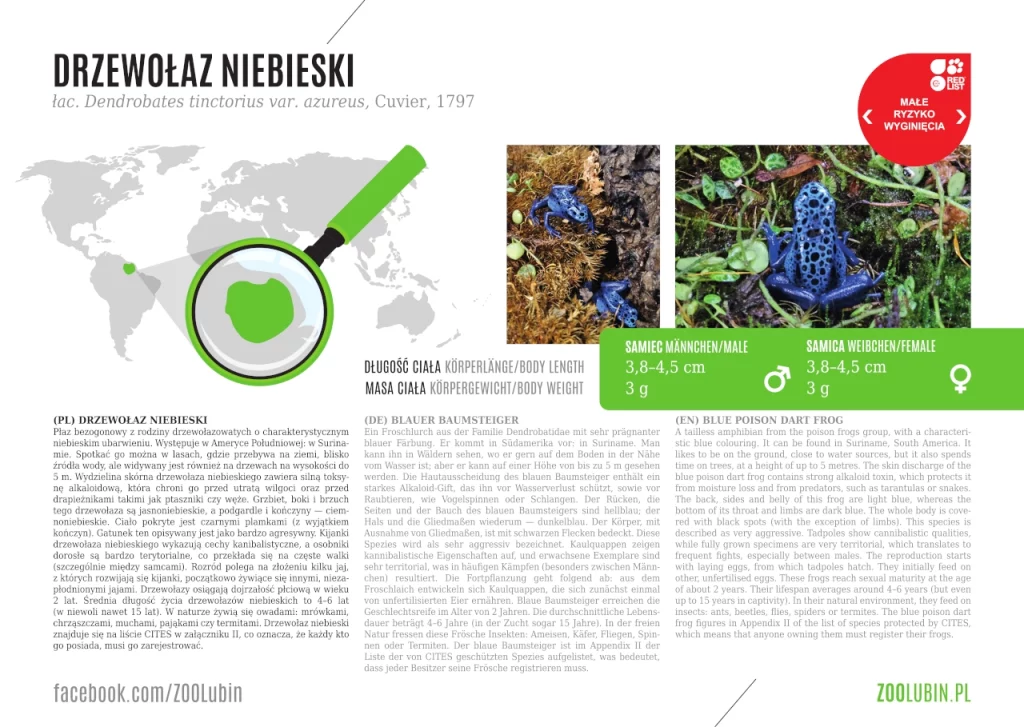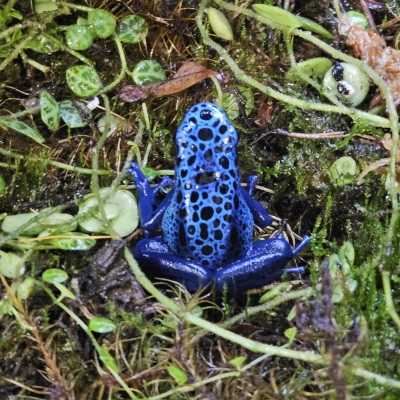
DOWNLOAD SPECIES LABEL – PDF file (size 3696 KB)
Blue poison dart frog
Dendrobates tinctorius var. azureus Cuvier, 1797
A tailless amphibian from the poison frogs group, with a characteristic blue colouring. It can be found in Suriname, South America. It likes to be on the ground, close to water sources, but it also spends time on trees, at a height of up to 5 metres. The skin discharge of the blue poison dart frog contains strong alkaloid toxin, which protects it from moisture loss and from predators, such as tarantulas or snakes. The back, sides and belly of this frog are light blue, whereas the bottom of its throat and limbs are dark blue. The whole body is covered with black spots (with the exception of limbs). This species is described as very aggressive. Tadpoles show cannibalistic qualities, while fully grown specimens are very territorial, which translates to frequent fights, especially between males. The reproduction starts with laying eggs, from which tadpoles hatch. They initially feed on other, unfertilised eggs. These frogs reach sexual maturity at the age of about 2 years. Their lifespan averages around 4–6 years (but even up to 15 years in captivity). In their natural environment, they feed on insects: ants, beetles, flies, spiders or termites.
The blue poison dart frog figures in Appendix II of the list of species protected by CITES, which means that anyone owning them must register their frogs.
Body length: 3,8–4,5 cm
Body weight: 3 g



